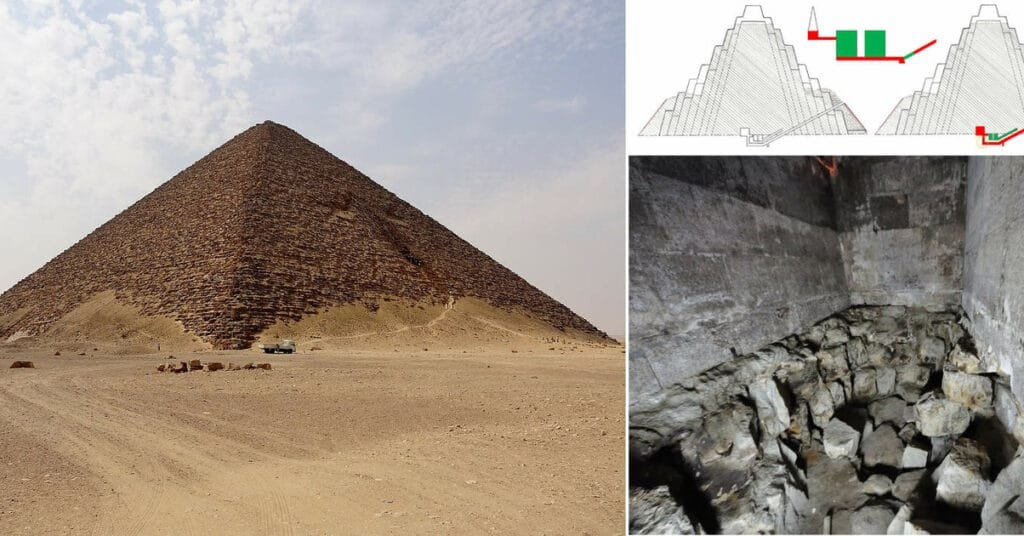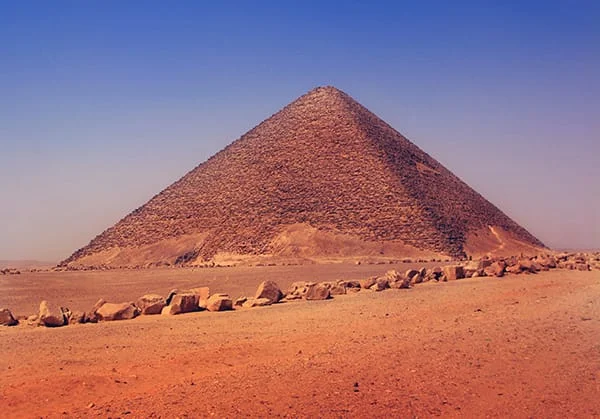The Red Pyramid, located in the Dahshur Necropolis, approximately 40 kilometers south of Cairo, is one of the most important and best-preserved pyramids of Ancient Egypt. Built during the reign of Pharaoh Sneferu, the first ruler of the Fourth Dynasty, around 2600 BCE, it represents a significant advancement in pyramid construction. Often overshadowed by the more famous pyramids at Giza, the Red Pyramid is considered the first true smooth-sided pyramid, marking a key milestone in the development of pyramid architecture. Sneferu’s reign was characterized by architectural experimentation, and the Red Pyramid was the culmination of his efforts to perfect the pyramid design. Its name comes from the reddish hue of the limestone used in its construction, which gives the pyramid its distinct appearance. As one of the earliest examples of a true pyramid, the Red Pyramid laid the foundation for the monumental structures that would follow, including the Great Pyramid of Giza built by Sneferu’s son, Khufu.
Egypt Tour Magic
Each tour type can be adjusted in terms of duration, activities, and accommodations to best meet the needs and interests of your clients.
About Us
Embark on a journey with Egypt Tour Magic and discover the magic of Egypt like never before …
Our Services
Discover the magic of Egypt with Egypt Tour Magic, where every detail is taken care of to ensure..
Our Team
At Egypt Tour Magic, our dedicated team is passionate about creating unforgettable travel experiences....
Refund and Returns Policy
At Egypt Tour Magic, we strive to provide exceptional travel experiences. However ..
Contact Us
We’re here to help you with any questions or to assist you in planning your next ..
Egypt Tour Magic
Explore More About Us








